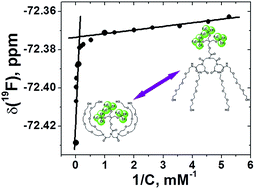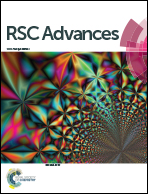Conformational transition of a non-associative fluorinated amphiphile in aqueous solution†
Abstract
Amphiphiles comprise a hydrophobic moiety and a hydrophilic moiety. A common property of many amphiphiles is to self-associate in aqueous solutions, driven by the need to shield the hydrophobic moiety from water. This feature has been utilized extensively to create various nano-scale architectures from amphiphiles. However, to effectively control amphiphile behavior, one should have the ability to both promote and prevent self-association. Fluorinated amphiphiles are especially prone to self-association, thus presenting a big challenge in developing non-associative amphiphiles. In this work, we solve this challenge by creating steric hindrance to association. The resulting fluorinated asymmetric amphiphile remains monomeric well above its apparent critical micelle concentration and up to its solubility limit, as demonstrated by small-angle X-ray and neutron scattering, dynamic light scattering and NMR diffusometry techniques. Not being able to associate intermolecularly, the amphiphile undergoes an intramolecular conformational transition, akin to protein folding, to wrap its hydrophilic moiety around its hydrophobic fluorocarbon moiety to shield it from water. This work demonstrates that steric hindrance is an effective tool in creating non-associative amphiphiles.


 Please wait while we load your content...
Please wait while we load your content...